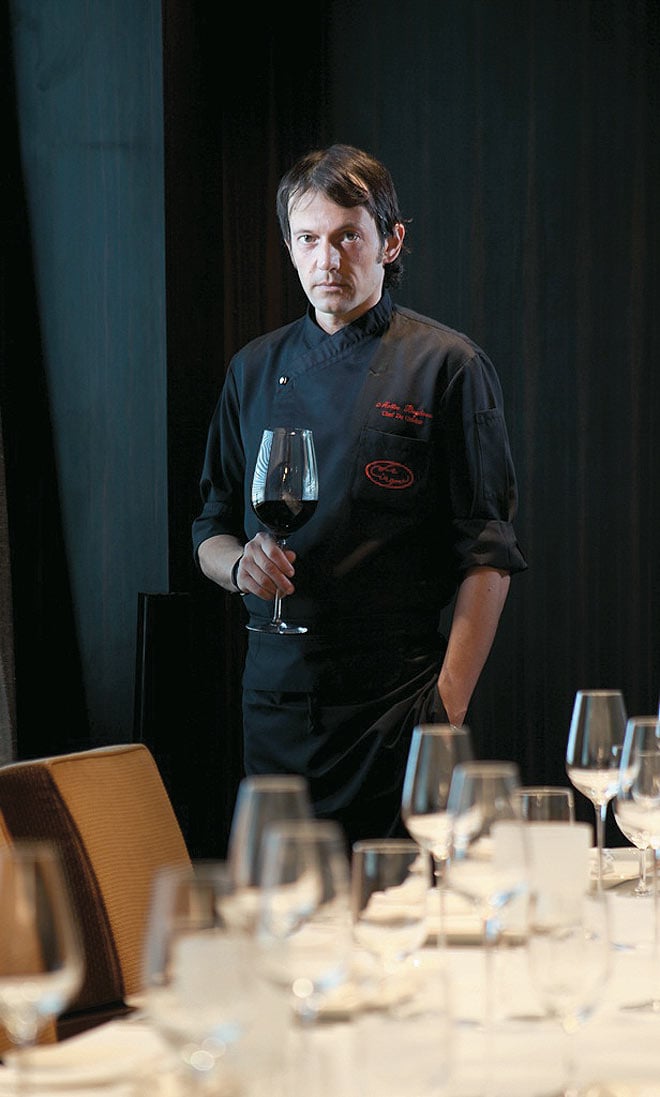OT: When did you develop an interest in food?
Matt Boglione: When I was eight. My
OT: How did you decide to make food your career?
Matt Boglione: At 14 I joined a professional hospitality school. My grandparents were pissed off. In those days chefs were slaves of the fire. My grandmother wanted to change my mind so she sent me to a neighbourhood restaurant kitchen to experience the heat, the rush, the shouting. But I loved it, and my grandmother’s plan failed badly.
OT: How was your first experience in a real kitchen?
Matt Boglione: Super bad. My school insisted that we work every summer to understand that the real world was full of danger, knives, oil and hot water. During my first internship I was in a restaurant in another town. Instead of cutting frozen octopus, I cut right through my finger. I wasn’t legally employed so the owner wouldn’t let me go to hospital. She took me to the pharmacy, got me stitched me up and fired me. I went back crying to my mum, and later worked in a better, cleaner kitchen in Florence.
OT: When did magazines and foodies start acknowledging your unique style?
Matt Boglione: After professional school, I travelled between Italy, New York, Los Angeles, Japan. Finding a job was super-easy in those days. It was when I was working in Gradisca in New York that I built my reputation. When you start out, you usually begin by following recipes and copying others. Then you make small alterations and finally creating something new. When I joined, Gradisca was a trattoria. In four years I brought it to the level of a restaurant with a contemporary twist.
OT: Your own restaurant `Il Matto’ received excellent reviews and was famous for its worm-garnished cocktails and daring menu. Why did it close down?
Matt Boglione: In New York, three restaurants open and three close every week. There’s a 96 per cent chance that a new restaurant will shut down in the first six months. `Il Matto’ was considered too avant garde. I lost $70,000 in the first three months and then the reviews appeared and business began to go up. But it involved working without a break for three years. Often I would finish locking up at 2 am, spend the night on the sofa and start again at 9 am the next day. In three years I lost 20 kg. By the end, I wasn’t sure if I could return to the kitchen, but when Le Cirque offered me a position, my confidence returned.
OT: What makes Le Cirque such a New York institution?
Matt Boglione: When Sirio Maccioni opened Le Cirque in 1974, Italians were seen as people who made pizza and pasta with meatballs. All the big restaurants were French. But Le Cirque served Italian food in a high level, society atmosphere. It developed dishes like Pasta Primavera and Crème Brulee. It changed attitudes so that gradually French cuisine has gone down a little and Italian has bloomed.
OT: How are you adapting the Le Cirque menu for Mumbai?
Matt Boglione: My first challenge was to create vegetarian choices. In New York we offer maybe one or two. Here we need 15 or 16. Also, I’ve had to create three Jain dishes. I’d heard of vegetarians and vegans, but never of people who don’t eat vegetables that grow beneath the ground like garlic and onion! I have been working on some unique dishes. A dessert with white chocolate and caramelised eggplant. An appetizer which deconstructs the classic Caprese. After a month or so, we will analyse every item and see what works and what doesn’t.
OT: In your 23 years in the kitchen, have attitudes changed?
Matt Boglione: TV cooking programs have changed the job completely. When I started out, the chef was the smelly man in the kitchen. Today, a successful chef is like a god.


